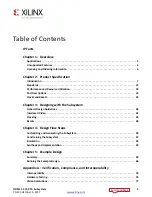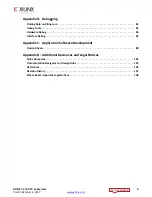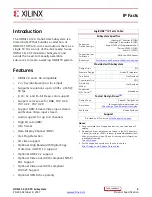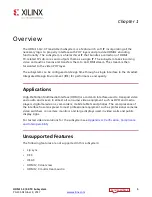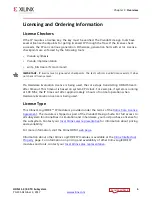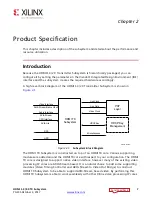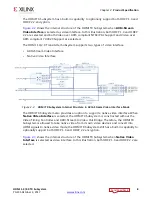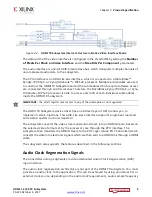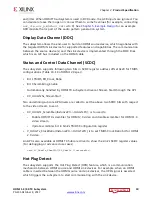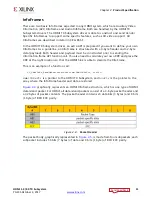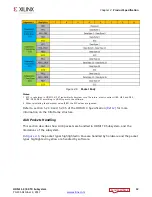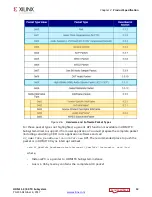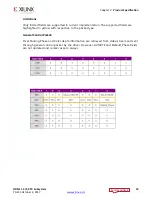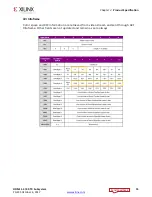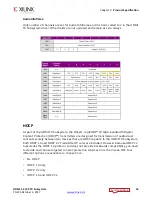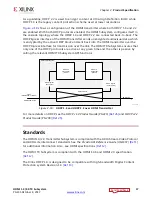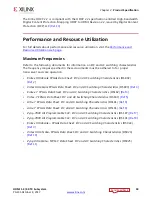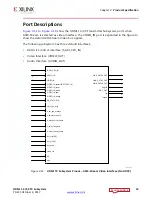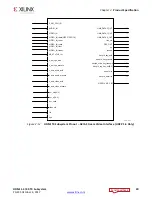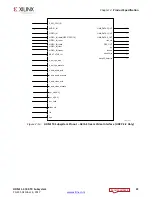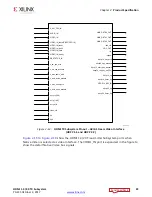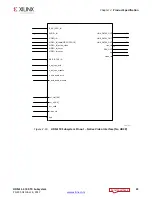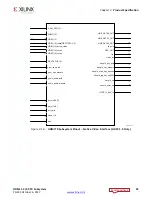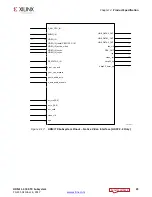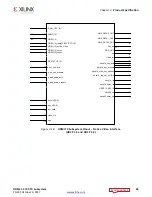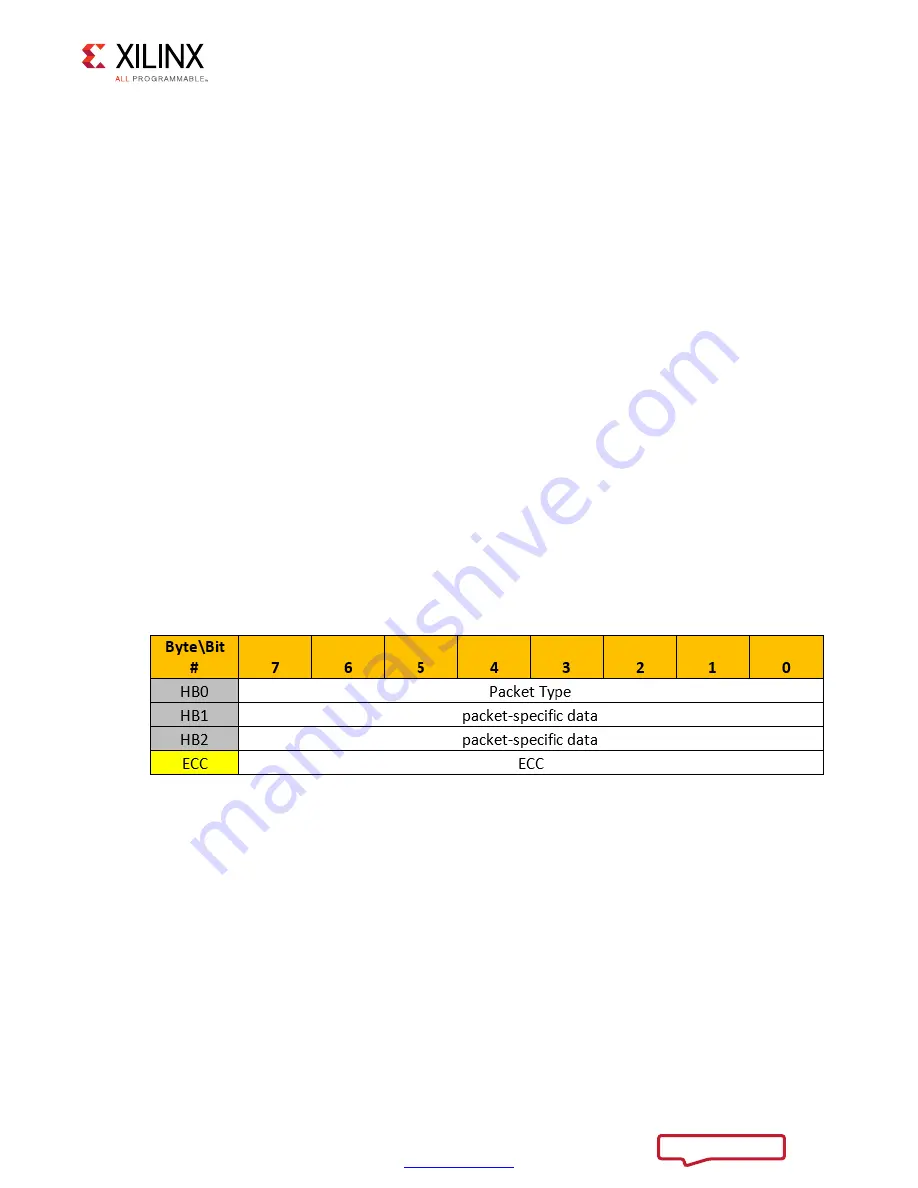
HDMI 1.4/2.0 TX Subsystem
11
PG235 October 4, 2017
Chapter
2:
Product Specification
InfoFrames
There are two basic InfoFrames expected in any HDMI system, which are Auxiliary Video
Information (AVI) Infoframe and Audio Infoframe. Both are handled by the HDMI TX
Subsystem drivers. The HDMI TX Subsystem driver is able to construct and send Vendor
Specific InfoFrames to support some specific features, such as 3D video support. All
InfoFrames are described in detail in CEA-861-F.
In the HDMI TX Subsystem driver, an extra API is prepared if you want to define your own
InfoFrames. As a guideline, an InfoFrame is structured with a 4-byte header and 32-byte
data (payload). Both header and payload must be constructed prior to sending the
information frame API function call. You also need to calculate your own CRC and place the
CRC at the right location so that the HDMI Sink is able to decode the InfoFrame.
This is an example of a function call:
XV_HdmiTxSs_SendGenericAuxInfoframe(HdmiTxSsPtr, AuxPtr);
HdmiTxSsPtr
is a pointer to the HDMI TX Subsystem, and
AuxPtr
is the pointer to the
array where the InfoFrame header and data are stored.
graphically represents an HDMI Infoframe structure, which is one type of HDMI
data island packet. For HDMI, all data island packets consist of a 4-byte packet header and
a 32 bytes of packet contents. The packet header contains 24 data bits (3 bytes) and 8 bits
(1 byte) of BCH ECC parity.
The packet body, graphically represented in
, is made from four subpackets; each
subpacket includes 56 bits (7 bytes) of data and 8 bits (1 byte) of BCH ECC parity.
X-Ref Target - Figure 2-4
Figure
2
‐
4:
Packet Header


